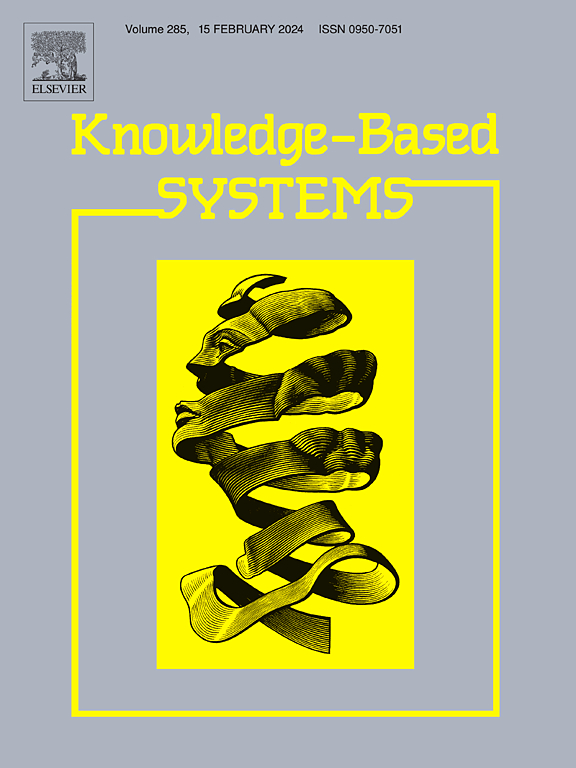CABiLSTM-BERT:基于深度隐式特征提取的面向方面的情感分析模型
IF 7.2
1区 计算机科学
Q1 COMPUTER SCIENCE, ARTIFICIAL INTELLIGENCE
引用次数: 0
摘要
基于方面的情感分析(ABSA)模型通常侧重于学习上下文语法信息和依赖关系。然而,在学习过程中,这些模型经常会丢失或忘记来自浅层和中间层的隐式特征信息,这可能会影响分类性能。我们认为模型每一层的隐式特征信息对处理同等重要。因此,本文提出CABiLSTM-BERT模型,该模型旨在充分利用每一层的隐式特征来解决这一信息丢失问题,提高准确性。CABiLSTM-BERT模型采用冻结的BERT预训练模型提取文本词向量特征,减少过拟合,加速训练。然后通过CABiLSTM处理这些词向量,CABiLSTM在每个方向和层中保留输入序列和lstm的隐式特征表示。该模型通过对每个特征组进行多头自关注计算,突出重要特征后,应用卷积将所有特征合并为一组嵌入表示。这种方法最大限度地减少了每一层的信息损失,并最大限度地利用了重要的隐含特征信息。最后,特征表示经过平均池化,然后通过情感分类层进行极性预测。CABiLSTM-BERT模型的有效性使用五个公开可用的真实数据集进行验证,并使用精度和Macro-F1等指标进行评估。结果证明了该模型在解决ABSA任务方面的有效性。本文章由计算机程序翻译,如有差异,请以英文原文为准。
CABiLSTM-BERT: Aspect-based sentiment analysis model based on deep implicit feature extraction
Aspect-based sentiment analysis (ABSA) models typically focus on learning contextual syntactic information and dependency relations. However, these models often struggle with losing or forgetting implicit feature information from shallow and intermediate layers during the learning process, potentially compromising classification performance. We consider the implicit feature information in each layer of the model to be equally important for processing. So, this paper proposes the CABiLSTM-BERT model, which aims to fully leverage implicit features at each layer to address this information loss problem and improve accuracy. The CABiLSTM-BERT model employs a frozen BERT pre-trained model to extract text word vector features, reducing overfitting and accelerating training. These word vectors are then processed through CABiLSTM, which preserves implicit feature representations of input sequences and LSTMs in each direction and layer. The model applies convolution to merge all features into a set of embedding representations after highlighting important features through multi-head self-attention calculations for each feature group. This approach minimizes information loss and maximizes utilization of important implicit feature information at each layer. Finally, the feature representations undergo average pooling before passing through the sentiment classification layer for polarity prediction. The effectiveness of the CABiLSTM-BERT model is validated using five publicly available real-world datasets and evaluated using metrics such as accuracy and Macro-F1. Results demonstrate the model's efficacy in addressing ABSA tasks.
求助全文
通过发布文献求助,成功后即可免费获取论文全文。
去求助
来源期刊

Knowledge-Based Systems
工程技术-计算机:人工智能
CiteScore
14.80
自引率
12.50%
发文量
1245
审稿时长
7.8 months
期刊介绍:
Knowledge-Based Systems, an international and interdisciplinary journal in artificial intelligence, publishes original, innovative, and creative research results in the field. It focuses on knowledge-based and other artificial intelligence techniques-based systems. The journal aims to support human prediction and decision-making through data science and computation techniques, provide a balanced coverage of theory and practical study, and encourage the development and implementation of knowledge-based intelligence models, methods, systems, and software tools. Applications in business, government, education, engineering, and healthcare are emphasized.
 求助内容:
求助内容: 应助结果提醒方式:
应助结果提醒方式:


